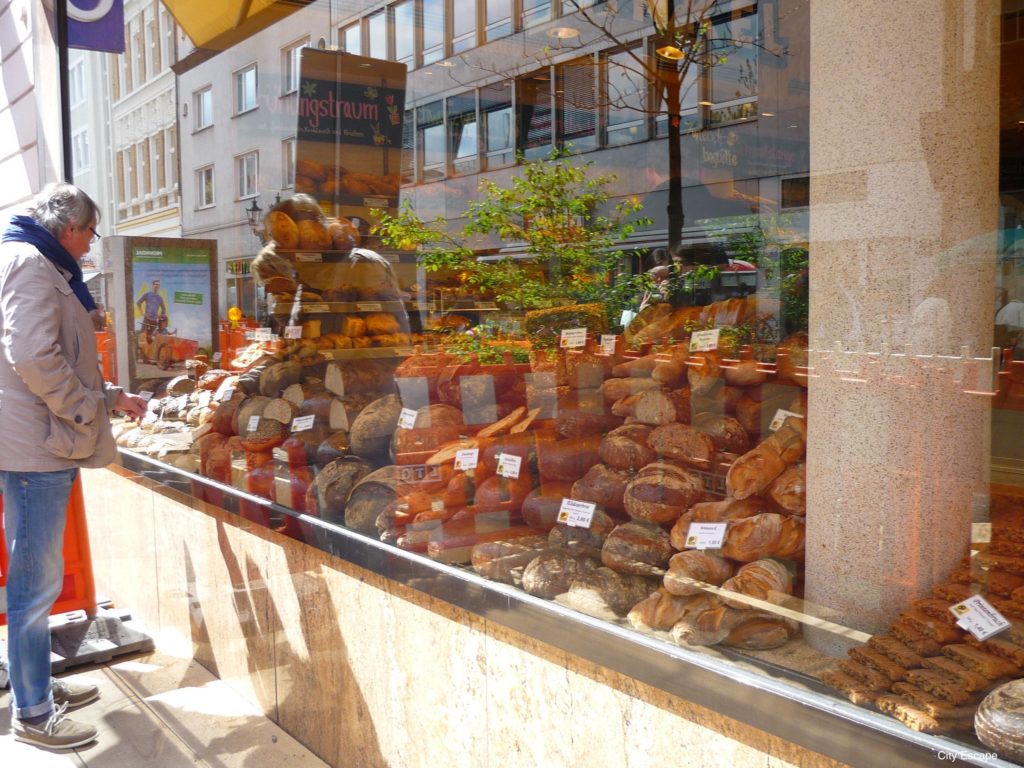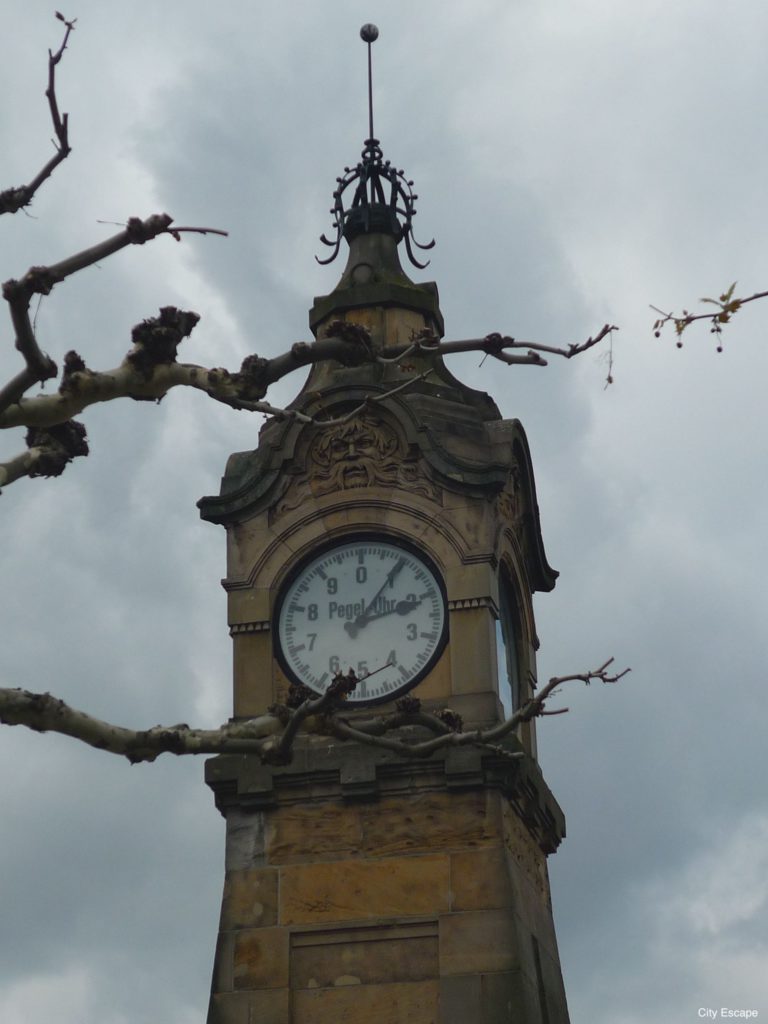In the city nicknamed the Longest Bar of the World (Längste Theke der Welt), you’ll not be surprised they love to get together after work to grab a beer and they love a good party. There is almost always something happening at the Rheinuferpromenade – the large, mainly car free walk next to the river Rhine, that lies on top of a tunnel allowing traffic to go from the north of the town to the south (or vice versa), without disturbing the bustling life in the city centre.
The biggest events being the carnival in February/March, a Day honouring the connections to Japan (Düsseldorf houses one of the biggest Japanese communities outside of Japan) in May, the “biggest fancy fair along the Rhine” in July and the Christmas market in December.
What you must try
When in Düsseldorf, you have to try Altbier (“Old Beer”), which got its name because its made using an old method of beer brewing (top-fermented). Of the 8 Düsseldorf Altbier breweries, 4 are in the Altstadt (“Old town”), a couple of streets between the river and Heinrich-Heine-Allee: Im Füchschen, zum Schlüssel, Uerige and Schumacher. If you enjoy eating meat, I suggest you enjoy the traditional brewery atmosphere while having an Altbier and tasting Eisbein (mind, this dish does not come in a small serving…)
Since 1726, mustard is produced in Düsseldorf (ABB Bergrath). Then, in 1918, the producer of the currently known Löwensenf moved to the city – and took over ABB in 1965. Have a tasting in the mustard shop (Berger Str. 29) to decide which one of the 20-something specialties you like best and take some home – I really like the one with figs to eat with a bit of cheese.
Another perfect accompaniment for cheese is bread: Hinkel bread! Bakery Hinkel has 2 shops, in Mittelstraße and Hohe Straße. For the full experience – you’ll know what I mean when you get there! – go to Mittelstraße and dive into the afternoon bustle (open ‘till 4pm on Saturday).

What you must see
This walk is about 6 km long, but I encourage you to deviate from the instructions here and there to dive into the city. As you can see on the map below, I’ll mainly focus on the oldest part of the city, the Altstadt (Old Town), starting our walk in the south just to come back at our starting spot in the evening.
Let’s start at Museum K21, a museum of contemporary art (art from the 21st century, hence the name). Check out the architecture of the building, gracefully combining old and new – best (and most romantic!) views are from across the ponds Kaiserteich (Pond of Emperors) and Schwanenspiegel (Miror of Swans), that lies in front. Go right on Graf-Adolf-Platz and to the north to the famous shopping street Kö (short for Königsallee) for a shopping spree – be sure to bring your credit card!
Turn right at Steinstraße to go to “Little Tokyo” in case you like to give an asian twist to your city visit – Düsseldorf is home the largest Japanese community in Germany! If you want to taste local specialties on the other hand, I can suggest Altbier in one of the traditional breweries (Im Füchschen, zum Schlüssel, Uerige and Schumacher – see above) or a shot of Killepitsch, a liqueur made from almost 100 herbs, that you can buy from the small window at Et Kabüffke (Flinger Str. 1) or anywhere else in town, really.
Around Grabbeplatz in the north of the city, you’ll find a couple of museums that are worth visiting. You can admire 20th century art from Picasso, Matisse, Mondriaan and Klee in K20, brother to K21 where we started our walk, or always changing expositions of contemporary art at Kunsthalle.

Next, check out the river and have a drink at Kasematten – the cafés underneath the promenade. While you’re there, ask your friends to tell you what time it is while watching the Pegeluhr – you’re in for a good laugh!
Actually, this “clock” is only a stream gauge, of which you can derive the water level of the river Rhine.
If it’s still in the afternoon, head over to Carlsplatz for a stroll on a covered market place, where I’m sure you’ll be wanting to try something at every stall. Don’t forget to check out the 100-or-so breads that bakery Hinkel has on display at Mittelstraße, select a couple (as many as you can remember), then jump into the crowded shop and try to move along with the sea of people until it’s your turn – now you only have to remember what it was you saw on display 30 minutes ago!
If you’d rather see the old town from afar instead of being inside, head back to the river to relax and cross the bridge to the Rheinwiesen (“fields” on the other side of the river) to have a nice view of the city. If you’re lucky, there will be sheep to keep you company.
Before you end your evening in Medienhafen, the Media Harbour, where you will fall in love with the old harbour details mixed with modern buildings, check out the clock that is displayed in LEDs on the Rheinturm – who is the first to get how to read the time? According to the Guinness Book of records, this largest decimal “timescale” of the world (to date, in 2020) shows you the hours on top (0, 1 or 2 lights burning in combination with another 9), then the minutes (up to 5 and up to 9), then the seconds (up to 5 and up to 9). 21:43:35 would give you 2 + 1 / 4 + 3 / 3 + 5 burning lights.

Only a short stroll from there, Admire Frank Gehry’s buildings that look like an art work in itself. Continue the end of your journey in Medienhafen, a hip and trendy place bustling with restaurants, bars and clubs.
What you must visit
The city has a lot more to offer (see 3+4 below) but I would urge you to take a tram or drive out to both north and south of the city to visit two palaces next to the Rhine…
- The first one in the north being the oldest and actually a ruin dating back to 1193, the Kaiserpfalz in Kaiserswerth was build by Holy Roman Emperor Frederick Barbarossa. The lovely town and picking meadows next to the Rhine invite you to pass a slow afternoon.
- Some 20 minutes to the south of Düsseldorf, you’ll find Schloss Benrath in the municipality with the same name. This pink castle (finalised in 1773) with its big park and impressing ponds both at the front and back now houses multiple museums.

- If you’re interested in German writers, don’t miss out on a visit to the birth place of Heinrich Heine (Bolkerstraße 53), today a book shop and literary centre and the Goethe Museum: publisher Kippenberg created a foundation around his extensive collection on Goethe and his time.
- Imagine you’re on the red carpet or playing in a horror movie when looking at the costumes and props of the Film Museum behind the old harbour or visit the Theatre Museum to get the ins and outs of the theatre at the opposite side of the Hofgarten, the public garden in the north of the Altstadt.
How to get around
Busses, underground and trams of VRR will get you through the city.
The S-Bahn, a stop-train, links all the different districts with each other and also takes you the slow way to nearby cities. Tickets for the S-Bahn are sold by Deutsche Bahn.